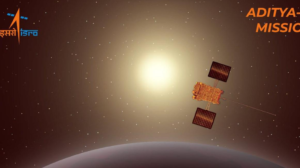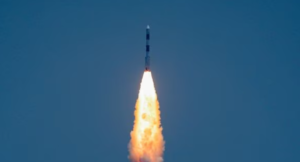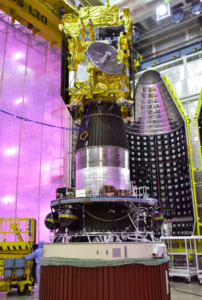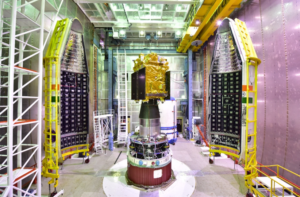Table of Contents
Aditya-L1
On January 6, 2024, a historic milestone was achieved in India’s space exploration journey as the Aditya-L1 spacecraft accomplished its Halo-Orbit Insertion (HOI) around the Lagrangian point L1, marking a crucial phase in the mission’s success.
The Halo Orbit: A Unique Path Around the Sun-Earth Line
The Aditya-L1’s orbit, a periodic Halo orbit located approximately 1.5 million km from Earth, presents a groundbreaking approach to solar observation. This three-dimensional orbit provides a continuous, unobstructed view of the Sun while maintaining a strategic position in the Sun-Earth line.
Significance of the Halo Orbit Insertion
The HOI process involved a complex maneuver as the spacecraft traversed the XZ plane in the Sun-Earth-L1 system. This critical maneuver aimed to align the spacecraft’s velocity components and attain the required trajectory for the Halo orbit. Achieving this precise orbit is crucial for several reasons:
- Optimized Observation: The Halo orbit offers continuous and unobstructed observation of the Sun, crucial for studying its dynamics.
- Reduced Fuel Consumption: By minimizing station-keeping maneuvers, this orbit extends the mission’s lifetime to five years, ensuring a prolonged study period while conserving fuel.
- Uninterrupted Communication: Positioned outside Earth’s magnetosphere, Aditya-L1 enables constant communication with ground stations and provides an optimal vantage point for solar wind and particle sampling.
Journey to the Halo Orbit
The path to the Halo orbit was a meticulously planned journey initiated on September 2, 2023, with the spacecraft’s launch on the PSLV-C57. The craft navigated through various phases, progressively enlarging its orbit while undergoing critical engine burns and trajectory adjustments.
Achieving Precision: Critical Moments in the Mission
Multiple engine burns and maneuvers, such as the trans-L1 injection and subsequent trajectory adjustments (TCM-1 and TCM-2), were executed to ensure the spacecraft’s alignment with the Halo orbit. These maneuvers aimed to minimize velocity additions while limiting the spacecraft’s exposure to high radiation belts.
Instruments and Objectives
Aditya-L1 carries seven indigenously built payloads from esteemed Indian scientific laboratories. These instruments serve the mission’s primary objectives:
- Comprehensive Sun Study: Analyzing the Sun’s photosphere, chromosphere, and corona using various electromagnetic and magnetic field detectors.
- Solar Dynamics and Space Weather: Investigating phenomena like coronal mass ejections, flares, plasma dynamics, and magnetic field topology to understand space weather origins.
- Solar Eruptive Events: Observing multiple solar layers to comprehend the sequence of events leading to eruptive solar activities.
ISRO’s Achievement and Future Prospects
The successful insertion of Aditya-L1 into the Halo orbit stands as a testament to ISRO’s technical prowess in executing intricate orbital maneuvers. This achievement not only paves the way for a groundbreaking study of the Sun but also instills confidence in handling future interplanetary missions.
A New Chapter in Solar Exploration
The successful Halo-Orbit Insertion of Aditya-L1 signifies a momentous leap in India’s space exploration endeavors. With its strategic positioning and cutting-edge instruments, this mission promises groundbreaking insights into the dynamic nature of our Sun, furthering humanity’s understanding of our solar system’s celestial marvels.








